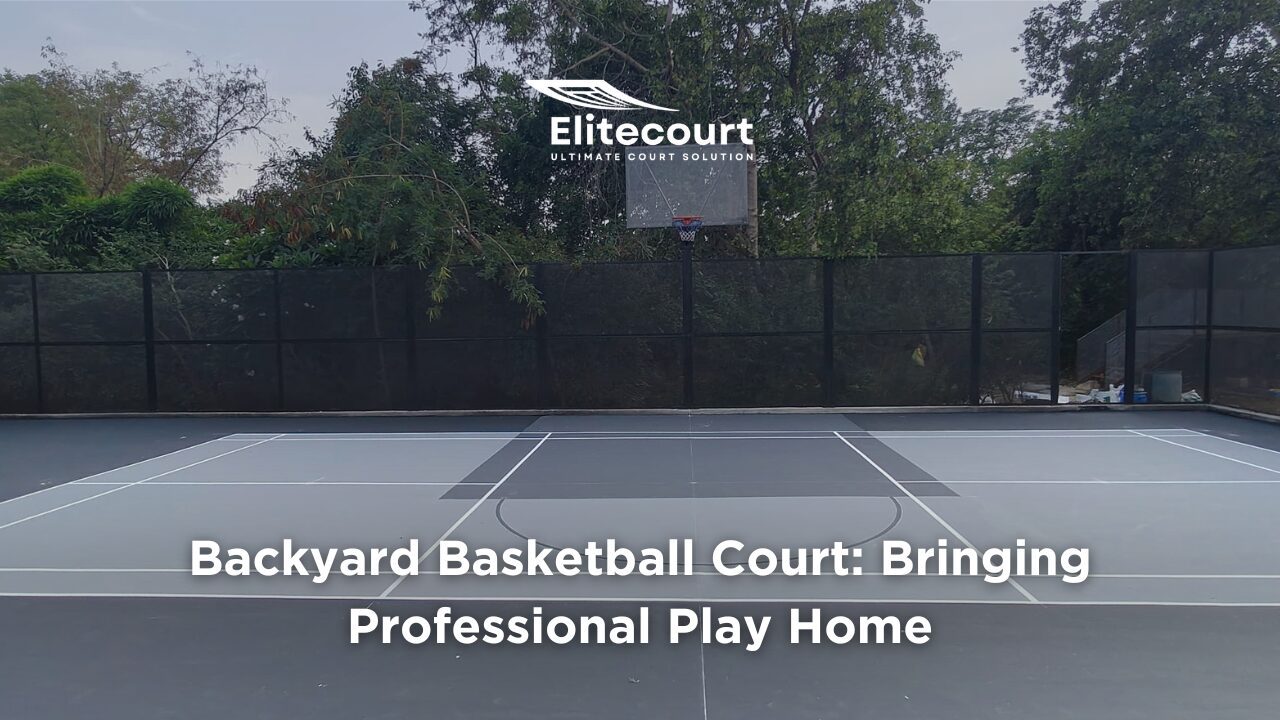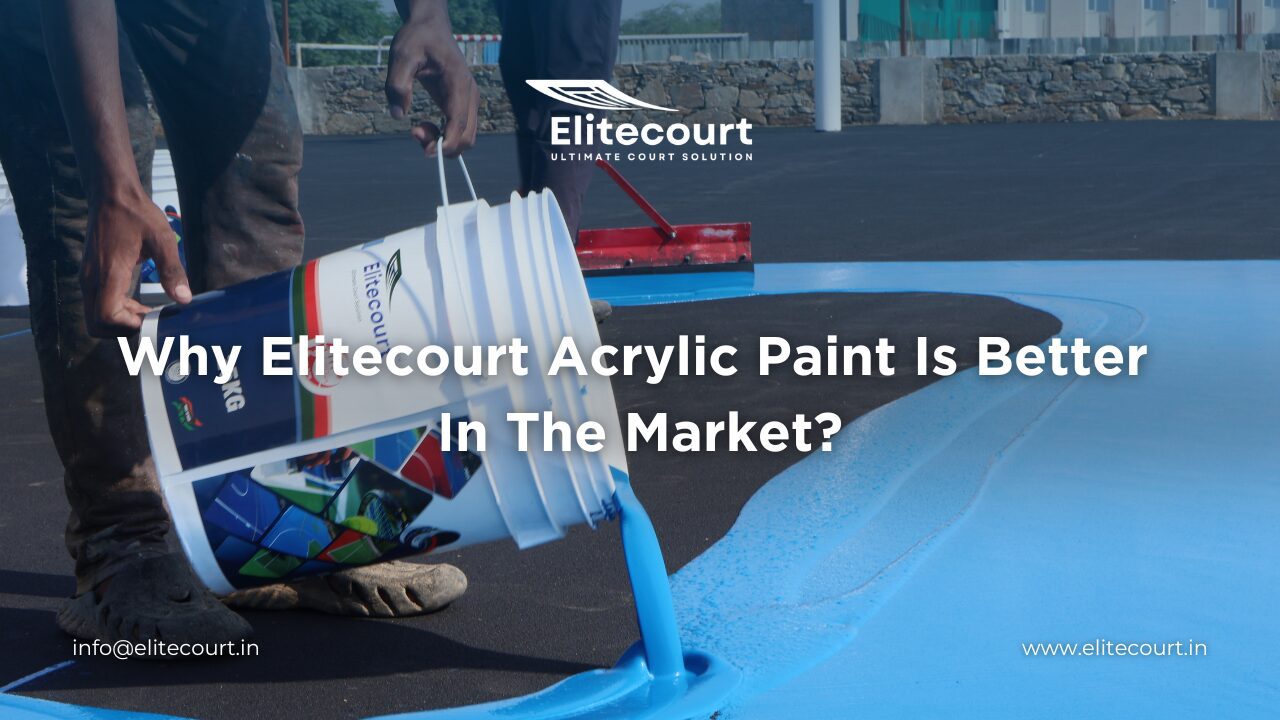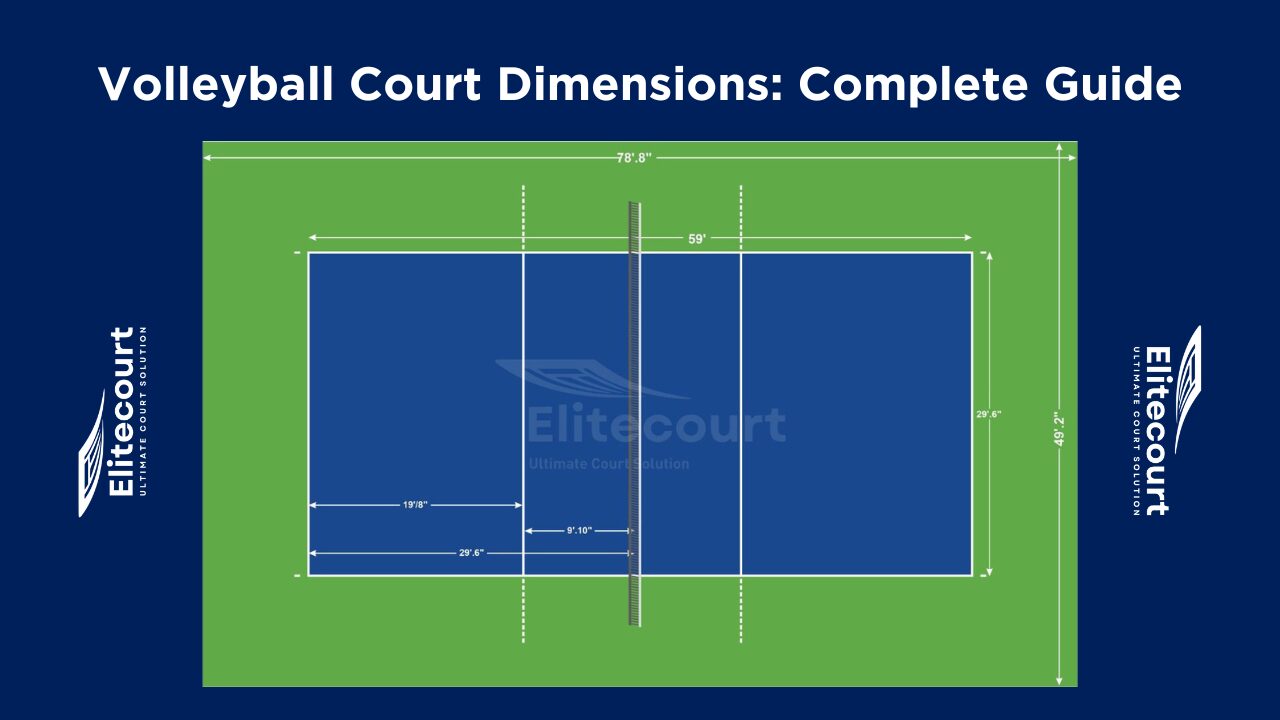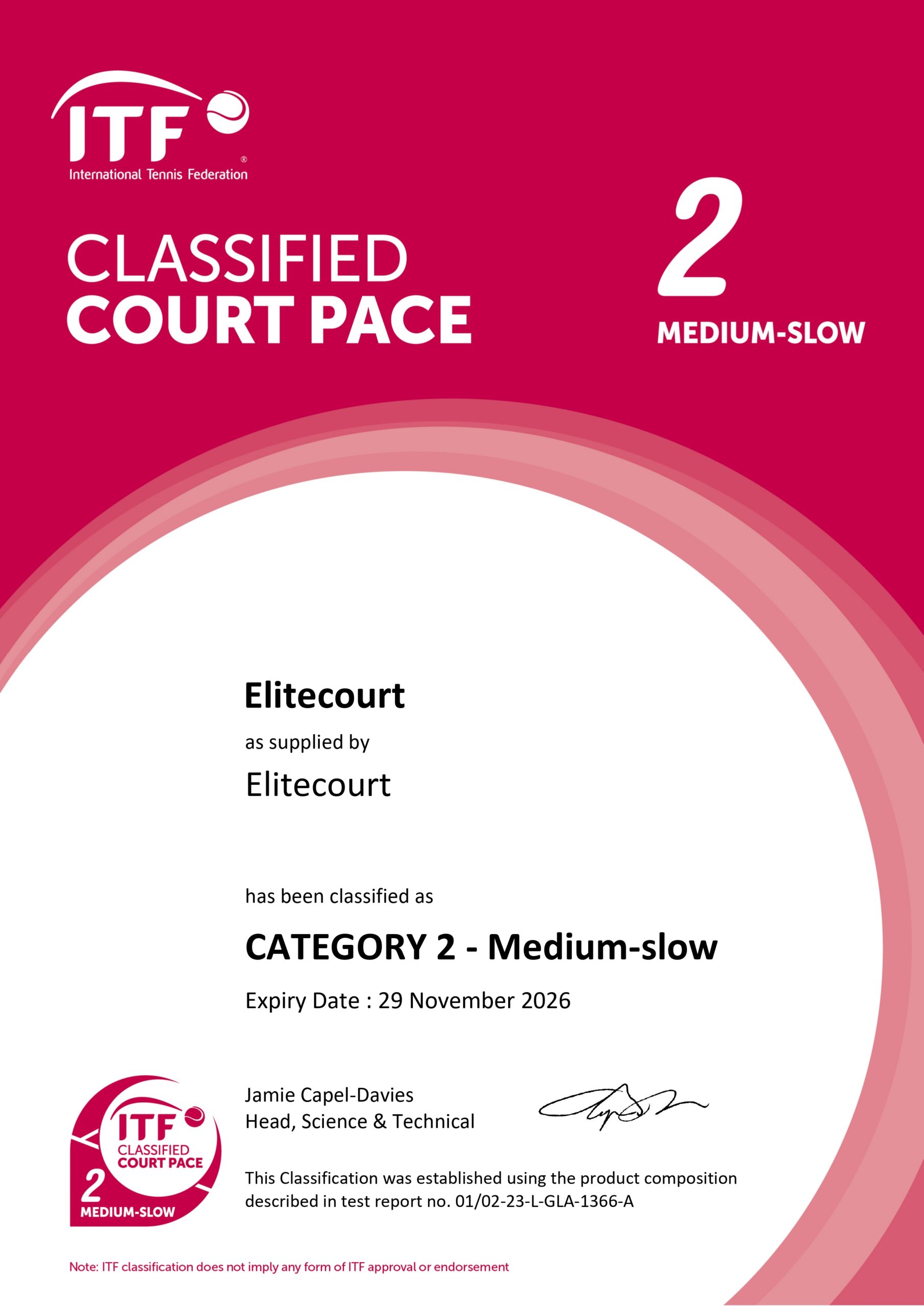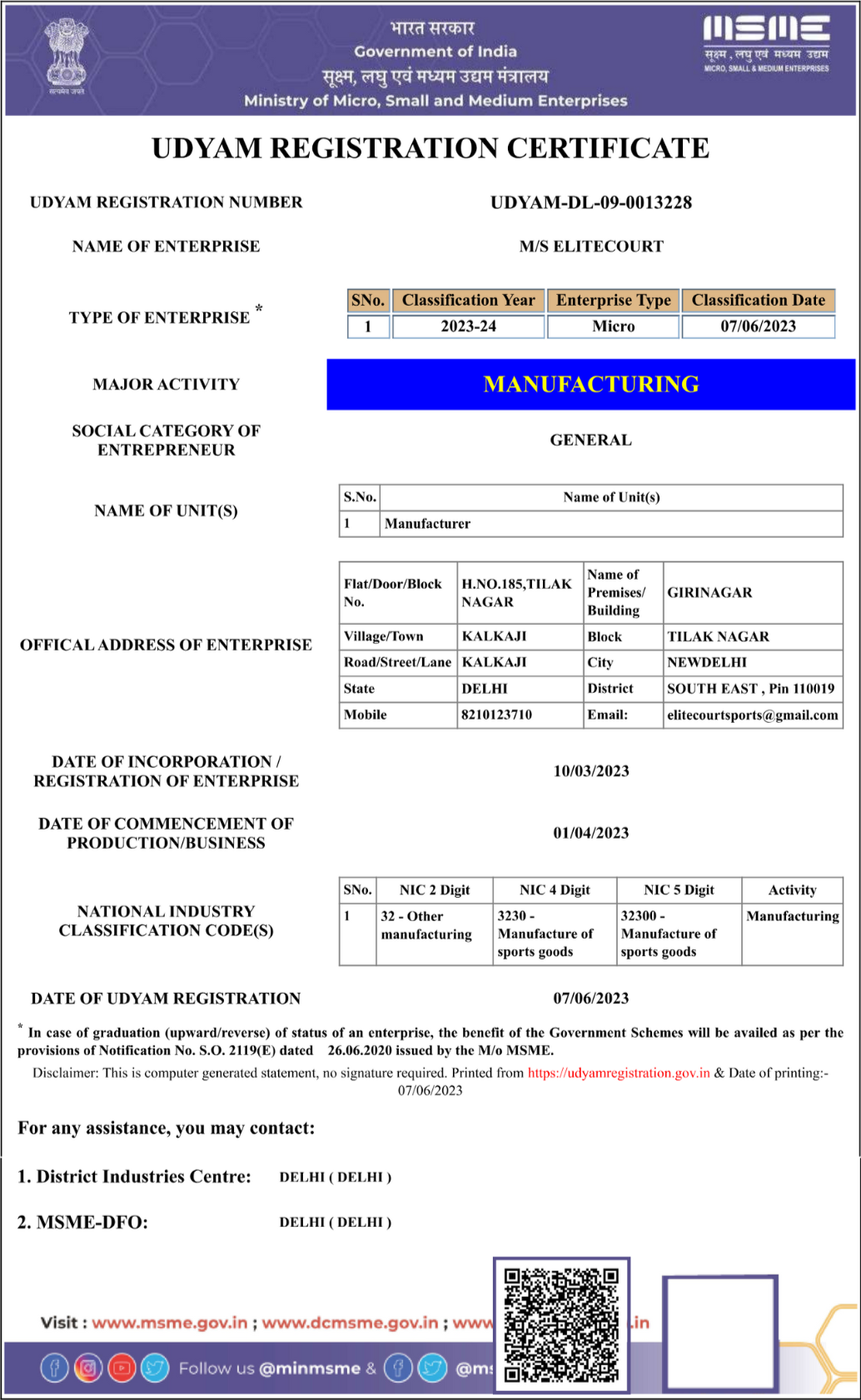How much does it cost to build indoor tennis court?
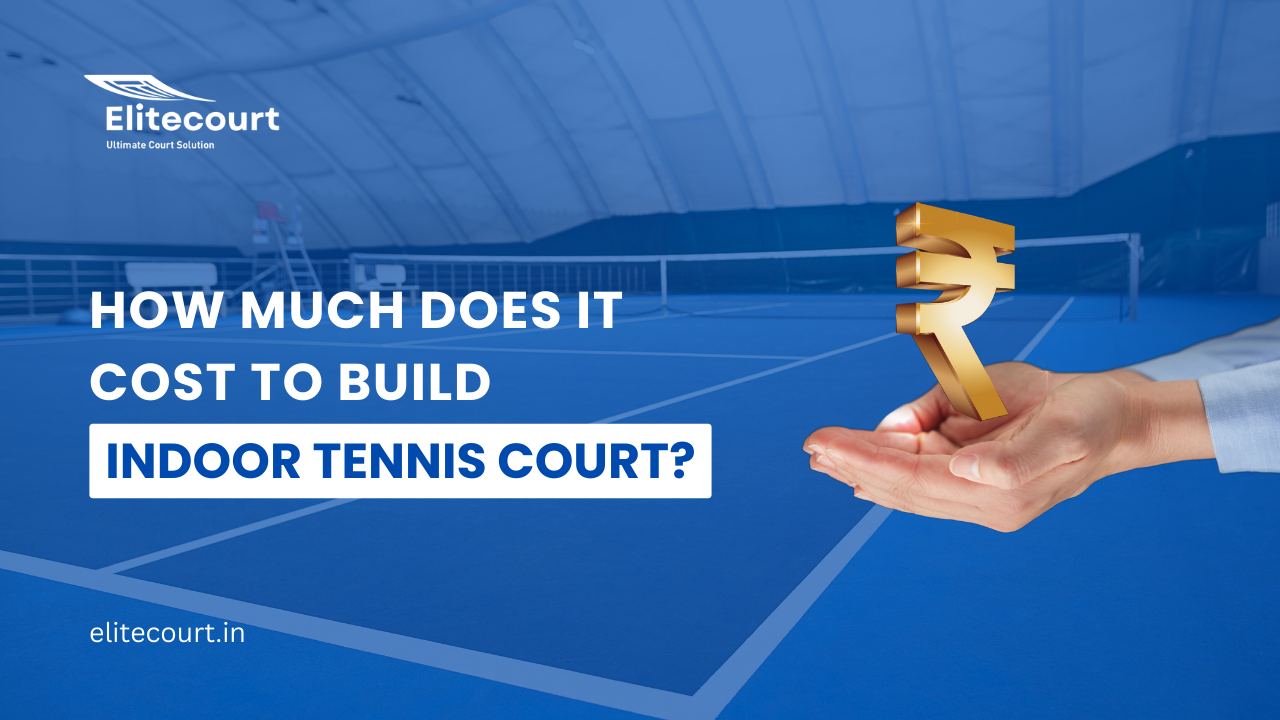
Table of Contents
Indoor tennis courts have evolved beyond a mere sports facility; they represent a paradigm shift in how enthusiasts experience and engage with the game. As the demand for year-round play continues to rise, the construction of indoor sports facilities, particularly tennis courts, has become a prevailing trend. In this article, we embark on a detailed exploration of the factors influencing the cost of building an indoor tennis court. We will delve into the intricacies of construction costs, with a special focus on Elitecourt’s ITF Classified Synthetic Acrylic Sports Flooring, a material that has garnered attention for its performance and cost-effectiveness.
Introduction
A Comprehensive Overview of the Importance of Indoor Tennis Courts
Indoor tennis courts have become more than a luxury; they are a necessity for tennis enthusiasts who want to play and train regardless of external weather conditions. The controlled environment provided by indoor courts ensures a consistent playing experience, making them appealing to players of all levels. From casual players seeking recreation to professional athletes honing their skills, the importance of indoor tennis courts is evident in the diverse range of users they attract.
Exploring the Increasing Trend in Constructing Indoor Sports Facilities
The surge in constructing indoor sports facilities, including tennis courts, is indicative of a broader trend. Communities, sports clubs, and individuals are recognizing the value of year-round accessibility to sports activities. This trend aligns with the changing expectations of sports enthusiasts who seek convenience and consistent playing conditions. The increase in indoor sports facilities reflects a commitment to promoting an active and engaged community.
Calculate Your Court Material Requirements
Calculate your synthetic sports flooring material and elevate your space!
Factors Influencing Cost
In-Depth Analysis of Location and Site Preparation Variables
The cost of building an indoor tennis court begins with the selection of the location and the subsequent site preparation. Geographical factors such as terrain, soil conditions, and accessibility play a pivotal role in determining the overall cost. An in-depth analysis of these variables is crucial for accurate budgeting, as each location presents unique challenges that can impact the construction process.
Understanding the Impact of Size, Dimensions, and Material Choices
The size and dimensions of the tennis court directly correlate with construction costs. Larger courts require more materials, increased labor, and a more intricate construction process, contributing to higher expenses. Material choices, especially the type of flooring selected, play a crucial role in both cost and performance. Elitecourt’s ITF Classified Synthetic Acrylic Sports Flooring emerges as a cost-effective and high-performance solution, influencing the overall budget considerations.
Delving into the Importance of Lighting and Ventilation Considerations
Proper lighting and ventilation are integral components of indoor tennis court construction. While these elements add to the upfront cost, they are crucial for creating a facility that meets international standards and provides a comfortable playing environment. High-quality lighting systems ensure optimal visibility during play, while efficient ventilation systems contribute to the well-being and satisfaction of players and spectators.
Construction Costs Breakdown
The Crucial Role of Foundation and Excavation in Construction
The foundation and excavation phase is the cornerstone of indoor tennis court construction. A solid foundation ensures stability and longevity, but it also adds complexity to the construction process. Excavation must be tailored to the specific characteristics of the site, considering factors such as soil composition and topography. While these initial steps contribute to the overall cost, they are non-negotiable for a structurally sound indoor tennis court.
Examining the Structural Framework and Its Impact on Cost
The structural framework, including support beams and the overall framework, is a significant component influencing cost. Balancing the need for a robust structure with cost efficiency is a key challenge. Opting for durable materials and construction methods is essential to ensure the safety and longevity of the indoor tennis court. The costs associated with the structural framework are a critical consideration in the overall budget breakdown.
Detailed Exploration of Elitecourt’s ITF Classified Synthetic Acrylic Sports Flooring
Elitecourt has positioned itself as a leading manufacturer of sports flooring materials, with a specific focus on ITF Classified Synthetic Acrylic Sports Flooring. This flooring option has gained recognition for its durability, performance, and low maintenance requirements. The streamlined installation process of Elitecourt’s flooring not only ensures efficiency but also contributes to reducing labor costs, making it an attractive choice for investors mindful of their budget.
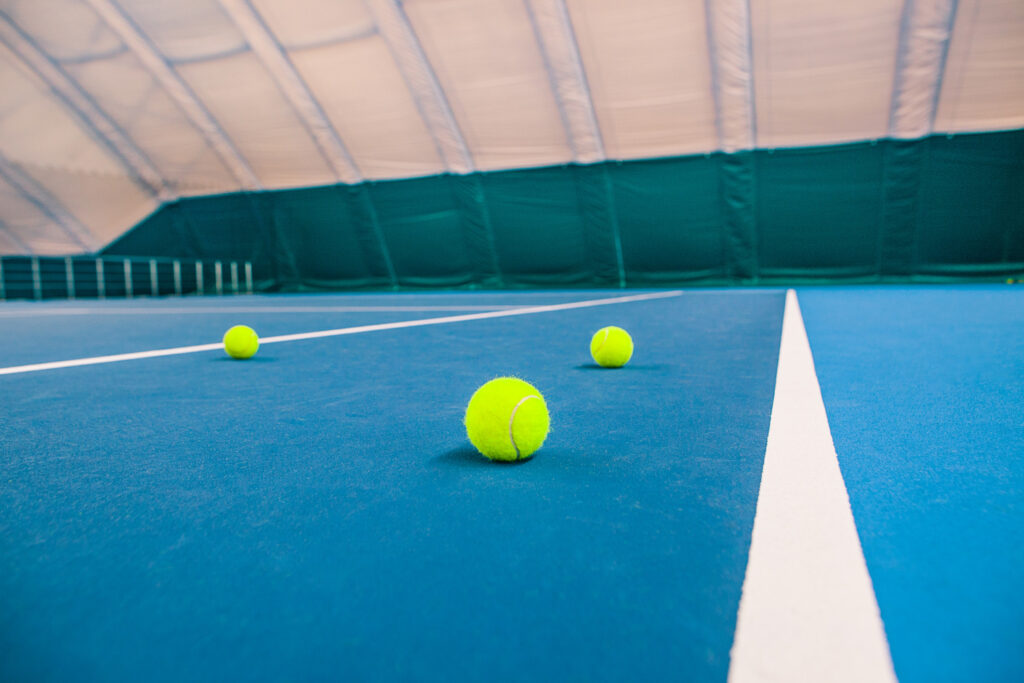
Illuminating the Costs of Lighting, Ventilation Systems, and Additional Amenities
Investing in quality lighting and ventilation systems is crucial for creating an indoor tennis court that meets the expectations of players and spectators. While these systems contribute to the upfront cost, they enhance the overall playing experience. Additionally, considering amenities such as spectator areas and changing rooms adds an extra layer to the construction expenses but enhances the overall functionality and appeal of the facility.
Calculate Your Court Material Requirements
Calculate your synthetic sports flooring material and elevate your space!
Elitecourt’s ITF Classified Synthetic Acrylic Sports Flooring
Thorough Introduction to Elitecourt as a Leading Manufacturer
Elitecourt has earned its reputation as a leading manufacturer of sports flooring materials. With a commitment to quality and innovation, the company has become a preferred choice for indoor tennis court construction. The expertise of Elitecourt extends to ITF Classified Synthetic Acrylic Sports Flooring, a material designed to meet international standards for tennis court surfaces.
Unveiling the Multifaceted Benefits of ITF Classified Synthetic Acrylic Sports Flooring
The advantages of Elitecourt’s flooring go beyond its ITF classification. It offers a perfect blend of performance and cost-effectiveness, making it a standout choice for indoor tennis courts. The material’s ability to withstand the rigors of regular play, coupled with its low maintenance requirements, positions it as a reliable and economical option for investors. The benefits of choosing Elitecourt’s flooring extend beyond the initial construction phase, contributing to long-term cost savings and a positive return on investment.
A Comparative Analysis of Flooring Options, Emphasizing Cost and Performance
Comparing Elitecourt’s ITF Classified Synthetic Acrylic Sports Flooring with other options underscores its cost advantages without compromising on performance. Investors keen on maximizing value for their investment find this material to be a compelling choice. The durability and longevity of Elitecourt’s flooring contribute to reducing the long-term cost of ownership, making it a strategic investment for indoor tennis court construction. A comparative analysis of flooring options aids investors in making an informed decision, considering both immediate and long-term financial implications.
Cost-Saving Tips
A Comprehensive Guide to Budget-Friendly Options Without Compromising Quality
Investors seeking cost-effective solutions without compromising quality will find a plethora of options. This section provides a comprehensive guide to budget-friendly options, covering various aspects of construction. From selecting economical materials to exploring innovative construction methodologies, there are numerous strategies to optimize expenses without sacrificing the essential elements that contribute to the functionality and longevity of an indoor tennis court.
Strategies for Maintenance to Prolong the Lifespan of Indoor Tennis Courts
A well-maintained indoor tennis court not only ensures optimal playing conditions but also extends the lifespan of the facility. This section explores strategies for maintenance that go beyond the construction phase. Regular cleaning, periodic inspections, and proactive maintenance practices are essential to prevent issues and preserve the quality of the indoor tennis court. By incorporating effective maintenance strategies, investors can contribute to the long-term cost-effectiveness of their investment.
Return on Investment (ROI)
A Holistic Examination of the Long-Term Benefits of Indoor Tennis Court Investment
Investing in an indoor tennis court is not merely an expense; it is a strategic financial decision with long-term implications. This section takes a holistic approach to examining the various elements that contribute to the return on investment (ROI). Beyond the immediate costs, the article explores the potential revenue streams and non-financial benefits that arise from owning and operating an indoor tennis court. Analyzing the long-term benefits helps investors make decisions aligned with their overarching goals and objectives.
Identifying Revenue Streams for Facilities with Indoor Tennis Courts
Beyond personal use, indoor tennis courts offer multiple revenue streams. This section delves into the potential sources of income for facilities with indoor tennis courts. Hosting events, organizing tournaments, offering memberships, and establishing partnerships are avenues through which facilities can generate income. Understanding these potential revenue streams is integral to assessing the return on investment for indoor tennis court construction. By identifying and leveraging these revenue opportunities, investors can enhance the financial sustainability of their investment.
Calculate Your Court Material Requirements
Calculate your synthetic sports flooring material and elevate your space!
Future Trends in Indoor Tennis Court Construction
The Impact of Technological Advancements on the Future of Indoor Tennis Courts
The future of indoor tennis court construction is intertwined with technological advancements. This section explores emerging trends that are shaping the landscape of indoor sports facilities. From the integration of smart court features to advancements in construction materials, staying informed about these developments is crucial for investors looking to build state-of-the-art indoor tennis courts. The article provides a forward-looking perspective, encouraging potential investors to consider how technological advancements may influence their construction choices.
Exploring Sustainability and the Rise of Eco-Friendly Options
As environmental consciousness continues to grow, the demand for sustainable and eco-friendly options in indoor tennis court construction is on the rise. This section delves into the potential alternatives, highlighting materials and practices that contribute to environmentally responsible construction. Exploring these options aligns with the global shift towards sustainable and green practices in various industries. The article emphasizes the importance of considering the environmental impact of construction choices and encourages investors to explore eco-friendly options for a more sustainable future.
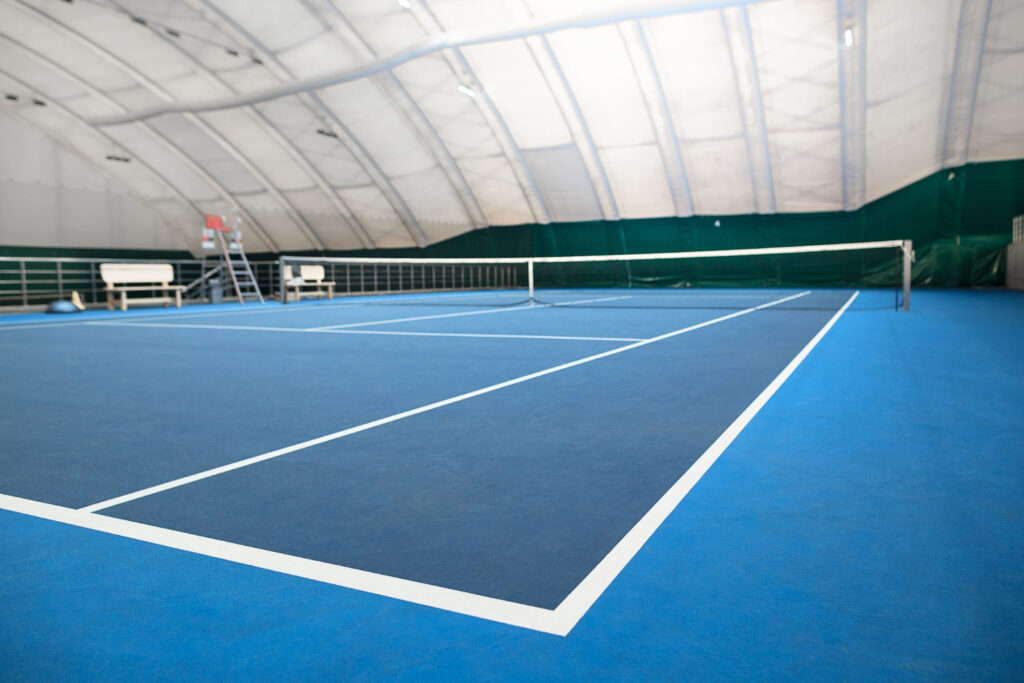
Conclusion
Summarizing Key Points to Assist Potential Investors
Building an indoor tennis court is a multifaceted endeavor that involves navigating a complex landscape of choices and considerations. From the initial site selection to the choice of materials and construction methods, each decision contributes to the overall cost. The conclusion section summarizes key points, offering potential investors a comprehensive overview to guide them in making informed choices aligned with their budgetary constraints. By distilling the essential information, the conclusion serves as a valuable reference for those embarking on the journey of indoor tennis court construction.
Encouraging Thoughtful Decision-Making for Those Embarking on Indoor Tennis Court Construction
As the article draws to a close, the emphasis shifts to encouraging thoughtful decision-making. Potential investors are urged to approach the construction process with a holistic understanding of the factors at play. By combining informed choices with a clear vision, investors can embark on the journey of building an indoor tennis court with confidence, knowing that each decision contributes to the creation of a high-quality sports facility. The article serves as a comprehensive resource, empowering individuals and entities to make choices that align with their goals and aspirations for indoor tennis court construction.
FAQs
How long does it take to construct an indoor tennis court?
The construction timeline for an indoor tennis court varies based on factors such as size, location, and complexity. Generally, the process takes several weeks to a few months, with larger and more intricate projects requiring a longer duration for completion.
What maintenance is required for Elitecourt’s flooring?
Regular cleaning and occasional maintenance checks are recommended to ensure the longevity and optimal performance of Elitecourt’s flooring. Specific maintenance guidelines provided by the manufacturer should be followed to address any issues promptly and preserve the quality of the flooring.
Can I host tournaments in my indoor tennis facility?
Yes, indoor tennis facilities are often used for hosting tournaments. Proper planning of the facility layout and amenities is essential to accommodate tournament requirements and ensure a successful event. Indoor facilities offer a controlled environment, making them suitable for various levels of tournaments, from local competitions to professional events.
Are there customization options available for Elitecourt’s flooring to match specific design preferences?
Elitecourt offers customization options for its flooring, allowing clients to choose colors and designs that align with their aesthetic preferences. Customization can enhance the overall look of the indoor tennis court while maintaining the performance standards of the flooring.
Does the location’s climate impact the construction and maintenance of an indoor tennis court?
Yes, the climate of the location can impact both construction and maintenance. Extreme temperatures, humidity, or drastic weather changes can influence material choices and maintenance routines. It’s essential to consider the local climate to ensure the indoor tennis court remains in optimal condition throughout the year.

